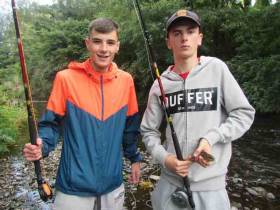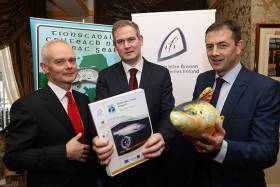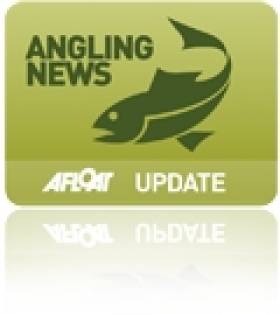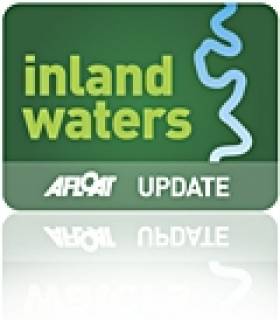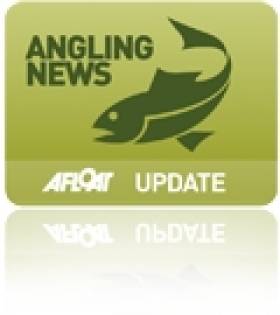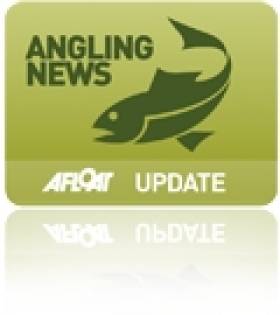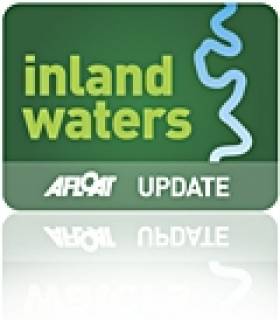Displaying items by tag: inland fisheries
Inland Fisheries Ireland has launched the Dublin Angling Initiative for the 2017 angling season. The initiative which is focused on the Greater Dublin Area, aims to promote, develop and improve angling among young people in target communities. Young people can take part in the initiative through their school, youth groups or community projects.
Last year, over 500 children and young people from the Dublin area participated in the programme which saw them take fishing lessons, join fishing trips and competitions and enjoy family fishing days. They also received environmental talks and lessons around important issues such as conservation, water quality and fisheries protection.
Suzanne Campion, Head of Business Development at Inland Fisheries Ireland said: “We are officially launching the Dublin Angling Initiative for the 2017 season and we welcome enquiries from interested groups. We already have schools, scout troops and youth projects booked in for fishing lessons and practical field trips during the summer months.
Fishing is something that can be enjoyed at any age and there are many fishing clubs in towns and cities, as well as in rural settings, who are looking for new members. This initiative provides an opportunity to introduce the next generation Ireland’s fisheries resource for recreational and educational purposes in a supportive environment.”
The Dublin Angling Initiative caters for any young person interested in angling, from the complete novice to the more advanced angler with exposure given to each of the different types of fishing. Fishing presentations and tours provide an insight into fish, their habitat, conservation measures and education regarding local fishing areas.
Inland Fisheries Ireland’s Dublin Angling Initiative has seen thousands of young people participate in the programme since its inception over 20 years ago. For further information, contact Oisin Cahill, Dublin Angling Initiative Coordinator at Inland Fisheries Ireland (E: [email protected]). Enquiries are welcome from any groups or individuals interested in the educational programme and availability will be on a first come, first served basis.
Inland Fisheries Ireland launches Celtic Sea Trout Project Report following Irish-Welsh Collaboration
Inland Fisheries Ireland has published a new report called The Celtic Sea Trout Project (CSTP) which addresses significant knowledge gaps around sea trout. This migratory trout has a significant fisheries value however some sea trout fisheries in parts of Ireland and the UK bordering the Irish Sea are suffering decline.
The project, which consisted of a multi-agency partnership investigation into sea trout stocks and fisheries of rivers entering the Irish Sea, aimed to address the knowledge gaps, and identify the causes of decline with a view to supporting potential management solutions. Current understanding suggests that the incidence of sea trout and the composition and status of their stocks is sensitive to changes in the environments in which they live. These life history features and the sea trout’s widespread occurrence, make it a unique and potentially sensitive indicator of environmental change.
The structure of the Irish Sea and the variety of rivers draining to it, ranging from the mountainous rivers of West Wales to the lowland rivers of East Ireland, meant there was a wide range of marine and freshwater environments for the study. Funded under the INTERREG IVA Ireland Wales Programme, the Celtic Sea Trout Project was the first project in Ireland and the UK to combine a variety of disciplines in the study of sea trout and their fisheries on a large scale.
Sean Kyne TD, Minister with responsibility for Inland Fisheries said, “I particularly welcome this report and the exemplary collaboration between Irish researchers at Inland Fisheries Ireland and other bodies and their international counterparts. The research has resulted in a better understanding of the Sea Trout stocks in the Irish and Celtic seas and this will underpin logical and well-informed decisions on the management requirements that are needed to safeguard these stocks into the future and to ensure the maximum social and economic contribution is secured”.
Dr Cathal Gallagher, Head of Research at Inland Fisheries Ireland said: “This is a ground-breaking multi-agency partnership investigation which aims to fill some of the information gaps around sea trout conservation. The first study of its kind, the Celtic Sea Trout Project is a wide-scale comprehensive, cross-disciplinary project which has provided valuable insight into many important research needs in this area, which were first identified at the International Symposium on Sea Trout in 2004. Its primary purpose of improving understanding of sea trout stocks in order to support better management in the freshwater and marine environments has been achieved.”
The research will improve the management and long term future of sea trout in the Irish Sea by providing information and advice for management which can be translated into fishery and conservation benefits for countries bordering the Irish Sea. It has also established a wider awareness and long term network of people working to secure the future of sea trout.
Partners in the Celtic Sea Trout Project included: Inland Fisheries Ireland, Bangor University, University College Cork, Natural Resources Wales, the Environment Agency (England), Isle of Man Government, Nith District Salmon Fisheries Board, Galloway Fisheries Trust, Annan District Salmon Fisheries Board and Buccleuth Estate (Border Esk). Subcontractors included APEM Ltd, Cefas and Fishskill Consultancy Services.
IFI Outlines Efforts In Protecting Ireland’s Inland Fisheries Resource
#Angling - Inland Fisheries Ireland (IFI) spent 188,404 staff hours and carried out 31,180 patrols in 2016 to protect Ireland’s fisheries resource, it was announced yesterday (Wednesday 25 January) at the launch of the IFI Protection Review.
The review highlights the results of recent protection work of the nation’s fisheries resource, which contributes €836 million annually to the Irish economy.
IFI’s programme saw fisheries officers patrol the entire resource – which includes 74,000km of rivers and streams, 128,000 hectares of lakes and 5,500km of coastline – in their attempts to apprehend those responsible for illegal fishing or angling and environmental offences.
Some key findings from the Fisheries Protection 2016 Review include:
- 103 prosecution cases initiated for breaches of fisheries and environmental legislation, regarded as one of the most important tools in the prevention of illegal fishing activities in the long term.
- 1,487 items of illegal fishing equipment seized, including 301 illegal fishing nets which measured 14,782 metres in total – about the same distance from Leinster House to Dublin Airport.
- 22,066 environmental inspections across a variety of sites including farms, industrial premises, wastewater plants, forestry sites and wind farms as well general inspections for pollutants in the natural habitat. Inspections were carried out by environmental officers with a view to mitigating against potential environmental incidents which could have a detrimental impact on fish populations and fish habitats.
- 36,979 inspections of recreational anglers carried out nationwide to ensure anglers were compliant with the fisheries acts, which aim to protect fish populations.
Minister of State for Inland Fisheries Sean Kyne, who opened IFI’s Oireachtas Briefing Day event yesterday, said: “Close to 200,000 man hours speaks for itself but I want to commend Inland Fisheries Ireland for the immense and dedicated efforts they have put into protecting our invaluable inland fisheries resource.
“The vast array of river, lake and coastal based habitats present huge logistical challenges for our frontline protection staff and for Inland Fisheries Ireland management. These challenges are being met by augmenting traditional patrol and protection methods with state-of-the-art surveillance technologies and new and innovative patrol methods in the ever changing environment in which services are delivered.”
IFI chief executive Dr Ciaran Byrne added: “The role of Inland Fisheries Ireland is to act as steward of the inland fisheries resource and that role is crucial as we endeavour to protect and conserve Ireland’s aquatic habitat and the wild, indigenous fish populations who live within it.
“Our fisheries and environmental officers worked relentlessly in 2016 to ensure the continued availability of this resource to communities nationwide for recreational and business opportunities.
“The resource contributes €836 million to the Irish economy every year and in particular, it supports rural and peripheral communities through tourism opportunities which may not be there otherwise. Our National Strategy for Angling Development outlines how we can grow the economic contribution by an additional €96 million per year and our protection programme goes hand in hand in helping us realise those ambitions.”
The fisheries protection programme comprised planned day and night patrols, covert patrols and intelligence-led surveillance operations, and specifically targeted the fish species most at risk during particular seasons.
The principle methods used for patrols were boats (1,151 patrols), kayaks (188 patrols) and personal water craft (37 patrols) while land-based patrols were carried out using quad bikes (84 patrols), bicycles (363 patrols) and by vehicles and foot (29,357 patrols).
In addition to the use of traditional methods, fisheries officers used advanced surveillance equipment including night vision scopes, thermal imaging scopes and enhanced optical surveillance scopes to help them in their work.
IFI’s National Strategy for Angling Development is the first national framework for the development of Ireland’s angling resource. The strategy will deliver a wide-ranging set of investments, innovations and promotions to ensure that fish stocks and angling infrastructure are protected and enhanced and will see an investment of €25 million over the next five years to grow the socio-economic contribution of angling in Ireland.
Last year, over €1 million was invested by IFI in angling development projects alone, which included 50 angling access projects as part of the Capital Grants Fund plus ongoing investment in more than 4,000 angling structures.
Inland Fisheries Ireland Launches Fish Monitoring Programme Report
Inland Fisheries Ireland (IFI) has launched a summary report on the findings of fish stock surveys undertaken in all water bodies (lakes, rivers and transitional waters) during 2014. The report, ‘Sampling Fish for the Water Framework Directive’, also outlines the current ecological status of fish stocks in each water body.
IFI has been assigned the responsibility by the Environmental Protection Agency (EPA) to deliver the fish monitoring requirements of the Water Framework Directive (WFD). The fundamental objectives of the WDF are to protect and maintain the status of waters that are already of good or high quality, to prevent any further deterioration, and to restore all waters that are impaired so that they achieve at least a good ecological status.
The fish monitoring programme has been conducted annually since 2007 at specified locations. The second year of the third three-year cycle began in 2014 with an extensive surveillance monitoring programme; 70 river sites, 26 lakes and seven transitional water bodies were surveyed throughout the country.
Dr Cathal Gallagher, Head of Research and Development in Inland Fisheries Ireland, said: “I would like to congratulate all who have contributed to the significant level of work which was undertaken in 2014. This work provides information on the ecological status of fish species present in selected waterbodies as well as information on their abundance, growth and population demographics for fishery managers, legislators, angling clubs, fishery owners and other interested parties”.
Dr Ciaran Byrne, CEO of Inland Fisheries Ireland, commented: “I welcome this summary report of IFI’s fish monitoring programme for the Water Framework Directive. The information captured in the report gives us an increased understanding of the dynamics and changes in our fish populations at sample locations throughout Ireland.”
2014 Report Findings
During 2014, 26 lakes were surveyed with 19 fish species and two types of hybrids identified. A total of 12,205 fish were recorded. Eel was the most common fish species recorded (96 per cent of lakes surveyed) followed by brown trout (81 per cent), perch (65 per cent), roach (42 per cent) and pike (38 per cent).
In general, salmon, brown trout, sea trout and Arctic char were the dominant species in the north, west and south-west of the country. Perch were recorded for the first time in a lake in Donegal. This introduction was illegal and the source is unknown; further investigation will be undertaken by IFI.
Experimental hydro acoustic surveys were carried out on Loughs Caragh, Allen, Melvin, Beagh and Leane to complement the routine surveys. Initial results show that Lough Allen has a large population of pelagic fish, dominated by pollan and juvenile perch; Lough Leane continues to sustain a good population of Killarney shad; Lough Beagh has a healthy Arctic char population; and Loughs Melvin and Caragh continue to sustain small Arctic char populations.
According to the report, 62 per cent of lakes were classified as ‘good’ or better status, with three sites having improved in status since they were last classified. The geographical variation in ecological status reflects the change in fish communities of upland lakes with little human disturbance versus the fish communities of lowland lakes subject to more intensive anthropogenic pressures.
A total of 14 fish species and one type of hybrid (roach x bream) were recorded in 70 river sites (or 50 water bodies) during 2014. A total of 13,480 fish were counted. Brown trout was the most common fish species recorded (96 per cent of sites), followed by salmon (77 per cent), eel (56 per cent), stone loach (50 per cent), minnow (39 per cent), and three-spined stickleback (39 per cent). Sixty per cent of river sites were classified as ‘good’ or better status, with two sites having improved in status since they were last classified.
A total of 50 fish species (or 40,362 individual fish) were recorded across two transitional waters (seven transitional water bodies). The highest number of species recorded in a water body was 29, in the Lower Shannon Estuary. Flounder and sand goby were the most widespread species, while sprat was the most abundant. Some important angling species documented during these surveys included brown trout, European sea bass, salmon, sea trout, pollack and conger eel. Overall both waters achieved ‘good’ status.
The report is available for review and download at wfdfish.ie/wp-content/uploads/2010/05/WFD_Report_2014_FINAL.pdf.
Cork School Named National ‘Something Fishy’ Competition Winners 2015
Fifth and sixth class students from St Mary’s Senior School, Dunmanway, Co. Cork, were named National Winners of Inland Fisheries Ireland’s ‘Something Fishy’ competition award at a prize giving ceremony held in the West Cork Education Centre, it was announced today
The students received the award and a €700 prize for their class project ‘The Wonderful Water Kids Show’. Project entries in this year’s competition addressed the themes ‘Water: A Precious Commodity’ and ‘Water Quality and the Environment’. Their innovative entry comprised a digital and artistic interpretation of the theme, presented through a video format.
Jim Daly TD and Noel Harrington TD, congratulated the students while presenting the perpetual ‘Something Fishy’ award to the students on behalf of Joe McHugh, Minister for Natural Resources, who was unable to attend the event.
Ms Mairead Twohig, Principal, St Mary’s Senior School, was presented with the school prize by Michael McCarthy TD, at the ceremony. Commenting today, Ms Twohig said: “I am delighted to accept this award on behalf of the students of St Mary’s Senior School, who have demonstrated their excellent understanding of water and its huge importance in the world in their ‘Wonderful Water’ project”.
Ciaran Byrne, CEO of Inland Fisheries Ireland (IFI), commented: “I would like to thank the participant schools and the staff of Inland Fisheries Ireland, who bring to life the ‘Something Fishy’ educational programme, not only at St Mary’s but at many other schools around Ireland. IFI is committed to this programme which I hope ignites an interest in all things fish, fishing and fish habitat.”
Speaking at the event, Suzanne Campion, of IFI, said: “‘Something Fishy’ is an educational resource designed and promoted by IFI in conjunction with the Blackrock Educational Centre. It ensures that children do not become an ‘endangered species’ on the banks of rivers, lakes and our coast. In a typical year, we bring the programme to around 100 schools across the country. Every year, IFI staff aim to make the programme exciting and interesting for children so that learning is easy and fun.”
Those addressing the attendees included Mary O’Donovan, Director of West Cork Education Centre and Pat Seaver Director of Blackrock Education Centre. Both educationalists applauded the high production standards of St Mary’s Senior School’s winning project and noted the many teaching and learning experiences emanating from the strand and strand units of history, geography, science in particular, but also through linkages and integration with most subjects in the new curriculum.
‘Something Fishy’ 2015/16 programme
Aimed at fifth and sixth class students at primary level, the programme is based on the life cycle of salmon and gets students to explore, water, fish, fish stocks, angling, conservation of rivers and lakes and fish as part of the food chain. As well as class based work Inland Fisheries Ireland fishery officers take students into the ‘field’ to get hands on experience of their work. A comprehensive set of resources for teachers and children is available on www.somethingfishy.ie
Schools interested in participating in the 2015/16 programme should contact their local Education Centre for details.
This year’s winning entry ‘The Wonderful Water Kids Show’ can be viewed online at: www.somethingfishy.ie/blog.html.
Inland Fisheries Announce Sponsorship Programme
Inland Fisheries Ireland Announce Sponsorship Programme 2015
Inland Fisheries Ireland (IFI) has today (10.03.15) announced its 2015 Sponsorship Programme which aims to increase awareness of IFI, its work, recreational angling in Ireland and the inland fisheries resource.
Anglers, angling clubs, angling federations, groups, associations and clubs or other appropriate bodies are being invited to apply for IFI's support to assist with events. This includes any appropriate inland fisheries, recreational angling, education and awareness or other appropriate event, competition, item or initiative.
The IFI Sponsorship Programme supports events based on: the location and nature of the event; the potential of the event to introduce new users to angling in an active capacity; education, increased awareness and empowerment of stakeholders in the areas of recreational angling as well as environmental, commercial fisheries and habitat issues; development of events and support for existing events; increased participation in national and international events for juvenile anglers and female anglers; events across all angling disciplines and all River Basin Districts; events that can draw large number or repeat visits of angling participants to rural areas.
Organisers should be aware that from 2015 onwards catch and release is prerequisite in all angling events seeking assistance under the IFI sponsorship scheme.
Applications for large scale national events and the hosting of international events with the capacity to draw increased numbers of both domestic and overseas visitors to rural and peripheral regions for extended periods are welcome. Organisers planning to host international competitions and events to be held beyond 2015 are also invited to register and / or apply for support for these events. This register will be used for planning and marketing purposes.
All applicants must complete a Sponsorship Application form and Event Approval Form and submit them to the IFI Business Development Section before March 31st, 2015. Applications will not be assessed until after the submission closing dates. Support, subject to availability, will primarily consist of staff and equipment use as well as location supports – there is minimal financial support available during 2015 for club events.
Funding for the delivery of IFI's remit through service level agreements with angling federations is possible, and federations are invited to make a combined application (including international, national and local events) for support on a prioritised basis. Where possible, support will be assigned to assist with the development of new events which provide additional opportunities to attract more users to recreational angling.
For further information on the IFI Sponsorship Programme 2015 including detailed sponsorship criteria and application forms, visit http://www.fisheriesireland.ie/Angling-Information/sponsorship-programme.html
Completed application forms should be sent to Bridie Fleming, Inland Fisheries Ireland, 3044 Lake Drive, Citywest Business Campus, Citywest, Dublin 24.
Inland Fisheries Ireland's Water Quality Project MulkearLIFE Wins LAMA Award
#waterquality – Inland Fisheries Ireland through the MulkearLIFE project has been awarded 'Most Significant Contribution to Water Quality' at the recent Local Authority Members Association (LAMA) Community and Council Awards 2015. The announcement took place at a ceremony last month at the Crowne Plaza Hotel, Santry.
MulkearLIFE is a European Commission LIFE+ Nature project working to restore degraded habitats throughout the Mulkear Catchment. The catchment forms part of the Lower Shannon Special Area of Conservation.
Speaking at the announcement of the awards, MulkearLIFE's manager, Mr. Ruairí Ó Conchúir, noted: "We are delighted to receive this LAMA Award for MulkearLIFE's work towards improving water quality. The success of this flagship project has been highly dependent on an active catchment management partnership process and on extensive outreach work to enhance environmental awareness for those living within or near the catchment.
"The project, one of the first and most important integrated catchment management projects in Ireland, has worked hard to promote the importance of the Mulkear catchment on a regional, national and international stage, and our major objective has been the development of strong linkage with the farming community to promote improved water quality."
Ó Conchúir continued: "In addition to this, we have worked hard to undertake outreach work in the community, including a comprehensive environmental educational programme within local schools, and actively managed practical conservation outings undertaken by the Mulkear Conservation Volunteers. This award is a testament to our work over the past five years and is something we are all extremely proud of."
Minister of State with Special Responsibility for Gaeltacht Affairs and Natural Resources, Joe McHugh TD, commented: "I would like to wholeheartedly congratulate Inland Fisheries Ireland and the MulkearLIFE project on their success at the recent LAMA Community and Council Awards. The destruction of eco-systems by invasive species and loss of habitat is one of the biggest problems facing our environment, and the actions undertaken by MulkearLIFE have helped to restore the natural balance in one of the Shannon's most important tributaries."
MulkearLIFE / Inland Fisheries Ireland was nominated by Cllr. Elena Secas, a Labour party member of Limerick City and County Council. The LAMA Community and Council Awards, now in their ninth year, acknowledge the important role that business, communications, and tourism play on both a local and national level in conjunction with councils.
The award recognises MulkearLIFE's work with local landowners to improve water quality on the Mulkear River and its main tributaries. The work focused on building a partnership based approach to examine practical cost effective ways by which river water quality on farms can be improved. River water quality is a concern in areas affected by cattle disturbance due to trampling and faecal contamination. The work was undertaken on 'pilot farms' and was designed to be a learning process for all involved, local farmers, planners and the staff of Inland Fisheries Ireland.
It is hoped that the work will help inform policy and the implementation of progressive agri-environmental measures on how-riparian zones (watercourse margins) can be best managed. Participation in the programme of work by farmers was entirely voluntary, the pilot sites worked to promote good water stewardship within the wider Special Area of Conservation through the development of sustainable water solutions where farmers are relying on direct access or cattle drinks for watering their cattle.
MulkearLIFE is headed by Inland Fisheries Ireland who acted as coordinating beneficiary and worked with key project partners in the Office of Public Works and Limerick City and County Council. The National Parks and Wildlife acted as a significant project co-financier. A range of other stakeholders supported the project including local authorities (North & South Tipperary County Councils) as well as other state bodies (ESB Fisheries, Teagasc, Coillte, EPA) and most especially the local community (local farmers and landowners, IFA, ICMSA, Angling Associations, local schools and school children and volunteers).
Inland Fisheries Ireland Monitors River Loobagh Pollution
#angling – Inland Fisheries Ireland (IFI) is today continuing to monitor an incident of pollution on the River Loobagh in Limerick, which resulted in an extensive fish kill earlier this week.
On 4th August 2014, IFI received a report from local anglers in Kilmallock that the River Loobagh at Riversfield Bridge, near the Limerick County Council water treatment plant, was in a polluted condition and dead fish could be seen. The River Loobagh is an important fishery, primarily for brown trout, but also for salmon which seemed to be returning to the river in small numbers.
A discharge of effluent into the River Loobagh was located, and the source was traced to an over ground steel slurry tank on a nearby farm. Once IFI contacted the farm owner, works immediately proceeded to prevent further discharge and the flow of effluent was intercepted at a number of locations, effectively preventing further discharge.
A series of samples were taken which have been sent for analysis. Pending the results of the analysis a decision will be made by IFI concerning a prosecution and any other legal actions that may be warranted.
IFI staff carried out a visual inspection of the River Loobagh to determine the extent of the fish kill. Further to this, approximately 555 fish were observed to be dead, with an additional 95 fish found by the local angling club. The majority of the fish were brown trout, as well as a small number of juvenile salmon.
IFI is continuing to work with both the farmer and Limerick County Council to ensure that no further pollution can arise and that all appropriate remedial action is taken. IFI will continue to monitor the situation and ensure that any pollution risk is removed.
Inland Fisheries Ireland (IFI) has a confidential hotline number to enable members of the general public to report incidents - 1890 34 74 24 or 1890 FISH 24. This phone line is designed to encourage the reporting of incidents of illegal fishing, water pollution and invasive species.
Fly tying to be Centrepiece of New Angling Exhibition
Most of the top names in fly tying and angling will be in Galway this November for the inaugural Irish Fly Fair say Galway organisers. Well known game angler Stevie Munn will be in town in partnership with Irish Angler magazine. The event sponsored by Inland Fisheries Ireland has succeeded in attracting many of the world's best fly tyers and anglers – including the top Irish ones – to what promises to be a great weekend for anglers and their families.
Centerpiece of the event will be the fly tying area, where over 30 world class experts will give demonstrations of their art and skill, as well as lessons in the techniques of constructing Salmon, Trout, Pike and Saltwater flies.
In addition there will be casting demonstrations by World renowned Fly Casters and also instruction from fully qualified instructors.
For those looking for Christmas gifts, there will be a wide range of tackle and other retailers with lots of bargains on offer.
There will be lots for the family too. For the first time ever in Ireland French firm Scatri will be letting people practice their angling skills on their range of fishing simulators. Galway Aquarium will allow visitors to see the wide range of fish and other creatures that live in our waters up close and personal and also an expert on entomology will be there. Galway Bay FM will broadcast live from the event on Saturday. Chef Chris Sanford will prepare a number of haddock recipes throughout the weekend, to complement Bord Bia's current promotional campaign to increase the awareness, and Irish consumer's consumption, of haddock.
More information HERE
Nominees to the Board of Inland Fisheries Ireland announced
“I am hopeful that the nominees to the Board of Inland Fisheries Ireland will assist in ensuring a smooth transition to the new organisation and that this will enable Inland Fisheries Ireland to quickly get into its stride once it is established”, said Minister Lenihan.
The nominees are:
Mr. Brendan O’Mahony – Chair
Ms. Lily Collinson
Mr. Andrew Duncan
Mr. Lal Faherty
Dr. Frances E. Lucy
Reflecting on the dedication and commitment shown by the outgoing members of the Central and Regional Fisheries Boards, the Minister said, “One must not forget the important work done by the existing boards over the past 30 years. There is no question as to the commitment and dedication which has been shown by the members of those boards during their tenure and they should be proud of the role they have played in protecting and developing this valuable resource of the State”.
In recognition of the need for and value of stakeholder participation in the sector, the Inland Fisheries Bill 2009 provides for the establishment of a national inland fisheries forum which will facilitate those who wish to make a contribution to the future development of the resource. The Minister added “I hope that the expertise of former board members will be captured in the changeover to the new structures and that they will continue to play an important role in this area through involvement in the national inland fisheries forum”.




























